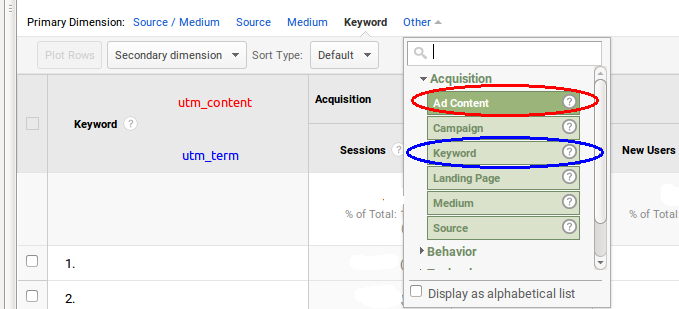This post is also available in:


In this article, we will introduce the so-called UTM parameters. We will show what they are used for and how to work with them correctly and efficiently.
What are UTM parameters
You can track your online traffic using UTM (short for Universal Transverse Mercator) parameters. A UTM is a piece of code within a URL that passes information to Google Analytics about where a visitor to your site came from.
In each link, you place a unique part of the URL between the so-called query parameters, which always start with a question mark symbol “?”. Other query parameters are separated by the ampersand symbol “&”. The resulting link then looks like this
https://eshop.com?utm_campaign=newsletter-2022-08-01&utm_source=samba&utm_medium=email&utm_term=sales&utm_content=banner1
The link redirects your visitor to the specified address and the UTM parameter within the link returns the following information to Google Analytics:
- Source (utm_source): the so-called source from where the visitor came (specific social media, marketing app, website, etc.).
- Medium (utm_medium): What marketing medium or channel brought the visitor (social, email, blog, affiliate)
- Campaign (utm_campaign): The name of the campaign that brought the customer in.
- Term (utm_term): If it is a PPC campaign, which search term brought the visitor.
- Content (utm_content): What specific link within the PPC campaign brought the visitor.
Based on this information, you can determine which elements of your campaign are working, where people are coming from, which links they are clicking and why they are coming.
How to add UTM parameters to URL links
For the Source, Medium, and Campaign UTM parameters, simply fill in these three values in the last step of creating your newsletter as part of a one-time email campaign or other campaigns in Samba. Samba will already take care of automatically adding these parameters to all links within the template you choose to use for that campaign.
The Term and Content parameters must be added manually to each link you want to track with these parameters.
How to name UTM parameters
It’s important to understand the principles of working with UTM parameters so that the information returned to you is clear and understandable.
- Focus on short, simple and descriptive UTM parameters
- Use lower case
- GAs are case sensitive (i.e. there is a difference between
utm_source=blogandutm_source=Blog), so any alternation between upper and lower case will throw off your data. - Also, beware not to have an automatic transformation of all UTM parameters to lowercase enabled in GA.
- GAs are case sensitive (i.e. there is a difference between
- Split words with hyphens
- If you want to use multiple words for a parameter, separate them with a hyphen (e.g.
utm_medium=facebook-post) - Spaces in URLs are not allowed! However, you can make your GA report show spaces between words by representing spaces in your URLs using a percentage sign (i.e. %).
- If you want to use multiple words for a parameter, separate them with a hyphen (e.g.
- Use unique values
- Never repeat yourself when creating UTM parameters. Repetition will make your reports difficult to read. At the same time, using the same UTM parameter for multiple different campaigns will cause you to combine data from those campaigns and therefore make them inaccurate.
- For example, for utm_campaign, we recommend that you always include the date of the campaign as part of the parameter in the format YYYY-MM-DD, i.e. for example
utm_campaign=newsletter-2022-08-01for a campaign sent on August 1, 2022.
- Create UTM parameters so that they are easy to read
- For example, from such an entry:
-
- Simply read the following information:
- Destination URL: https://blog.samba.ai/2022/08/giveaway-dashboard-redesign
- utm_source: facebook
- utm_medium: post
- utm_campaign: new-admin-dashboard-2022-august
- Simply read the following information:
It is important to remain consistent in the way you name UTM parameters. If you deviate, you will mess up your data or be confused by your analytics report.
Term and Content UTM parameters
These parameters determine what search term and what specific link brought the visitor to you. These are parameters that are sort of an extension of the basic source, medium, and campaign parameters.
In the template editor, add an appropriate parameter after the link of each selected product (if you have already used the “?” symbol in the URL to insert query parameters, you need to add additional parameters using the “&” symbol).
The resulting URL link may look like the following:
- Content: https://www.eshop.com/category/product1?utm_content=placement1_newsletter-2017-01-00
- Term: https://www.eshop.com/category/product1?utm_term=placements
The report of these two UTM parameters can be found in Google Analytics under these metrics:
- utm_content: Ad Content
- utm_term: Keyword


